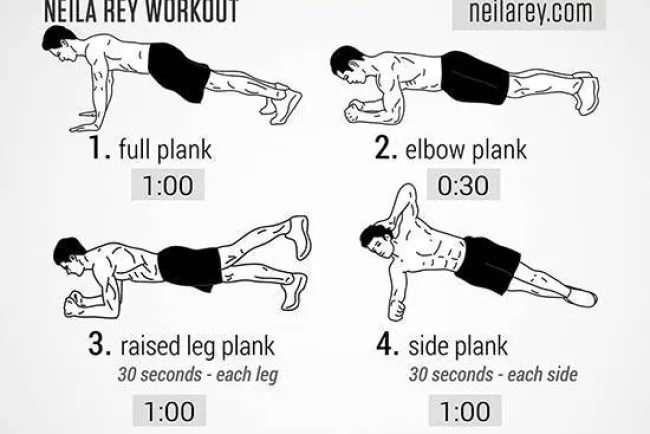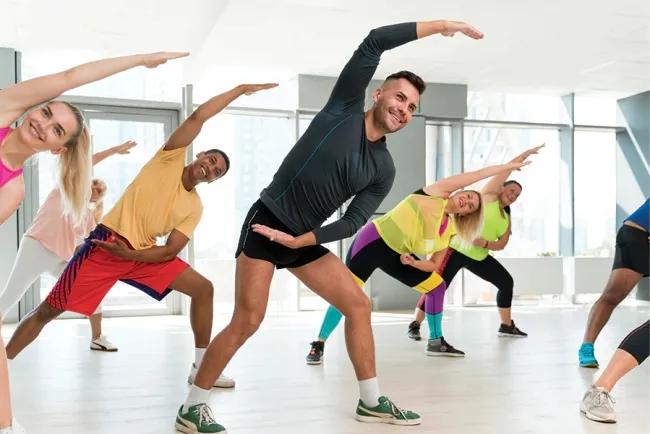Exercise: A Comprehensive Guide to Physical and Mental Well-Being...!!!
Exercise is a crucial component of a healthy lifestyle, encompassing any physical activity that enhances or maintains fitness, overall health, and well-being. From aerobic activities like running and swimming to strength training and flexibility exercises, regular physical activity offers numerous benefits that contribute to both physical and mental health.

Physical Benefits of Exercise
The physical benefits of exercise are extensive and well-documented. Engaging in regular physical activity helps in:
1.Weight Management: Exercise plays a vital role in weight management by burning calories and boosting metabolism. It helps prevent excess weight gain and supports weight loss when combined with a balanced diet.
2.Cardiovascular Health: Aerobic exercises such as running, cycling, and swimming improve heart and lung function, reducing the risk of cardiovascular diseases like heart attacks, strokes, and high blood pressure. Regular exercise strengthens the heart, enhancing its efficiency in pumping blood throughout the body.
3.Muscle and Bone Strength: Strength training exercises, including weight lifting and resistance training, build and maintain muscle mass. They also promote bone density, reducing the risk of osteoporosis and fractures, especially in older adults.
4.Flexibility and Balance: Activities like yoga and Pilates improve flexibility, balance, and coordination. These exercises enhance the range of motion in joints, decrease stiffness, and prevent injuries.
5.Chronic Disease Prevention: Regular physical activity lowers the risk of developing chronic diseases such as type 2 diabetes, certain cancers, and metabolic syndrome. It also helps manage existing conditions, improving quality of life.

Mental and Emotional Benefits of Exercise
Beyond physical health, exercise has significant effects on mental and emotional well-being. Some of these benefits include:
1.Stress Reduction: Exercise is a natural stress reliever, promoting the release of endorphins—chemicals in the brain that act as natural painkillers and mood elevators. Physical activity helps reduce cortisol levels, the body's stress hormone, leading to a more relaxed state of mind.
2.Improved Mood: Regular exercise has been shown to alleviate symptoms of depression and anxiety. The combination of increased endorphin levels and the accomplishment of physical goals contributes to a more positive outlook on life.
3.Enhanced Cognitive Function: Exercise boosts brain function and cognitive abilities by increasing blood flow to the brain, stimulating the growth of new neurons, and improving memory and learning. It has been linked to a reduced risk of cognitive decline and neurodegenerative diseases like Alzheimer's.
4.Better Sleep: Regular physical activity can help regulate sleep patterns, leading to more restful and restorative sleep. Exercise can alleviate insomnia and other sleep disorders by promoting relaxation and reducing stress.
5.Increased Energy Levels: Contrary to the belief that exercise makes you tired, regular physical activity boosts energy levels by improving cardiovascular efficiency and overall fitness. It enhances stamina, making daily activities less tiring and more enjoyable.
:max_bytes(150000):strip_icc()/Health-GettyImages-1411330495-f398930655c5431d85983febb6aa5f7c.jpg)
Types of Exercise
Exercise can be categorized into four main types, each offering unique benefits:
1.Aerobic Exercise: Also known as cardio, aerobic exercise involves continuous, rhythmic activities that increase heart rate and breathing. Examples include running, cycling, swimming, and dancing.
2.Strength Training: This type of exercise focuses on building and maintaining muscle mass through resistance exercises. Weight lifting, bodyweight exercises, and resistance band workouts are common strength training activities.
3.Flexibility Exercises: These activities enhance the range of motion in joints and muscles. Stretching routines, yoga, and Pilates are excellent for improving flexibility and reducing muscle tension.
4.Balance and Stability Exercises: These exercises improve coordination and prevent falls, especially in older adults. Balance exercises include tai chi, standing on one leg, and using balance boards.
Exercise is a vital component of a healthy lifestyle, offering a wide range of physical, mental, and emotional benefits. Incorporating regular physical activity into daily routines can lead to improved overall health, enhanced well-being, and a better quality of life. Whether it's a brisk walk in the park, a yoga session, or a vigorous workout at the gym, finding enjoyable ways to stay active is key to reaping the countless rewards of exercise. By prioritizing our fitness and well-being, we pave the way for a healthier and happier future.
What's Your Reaction?

















